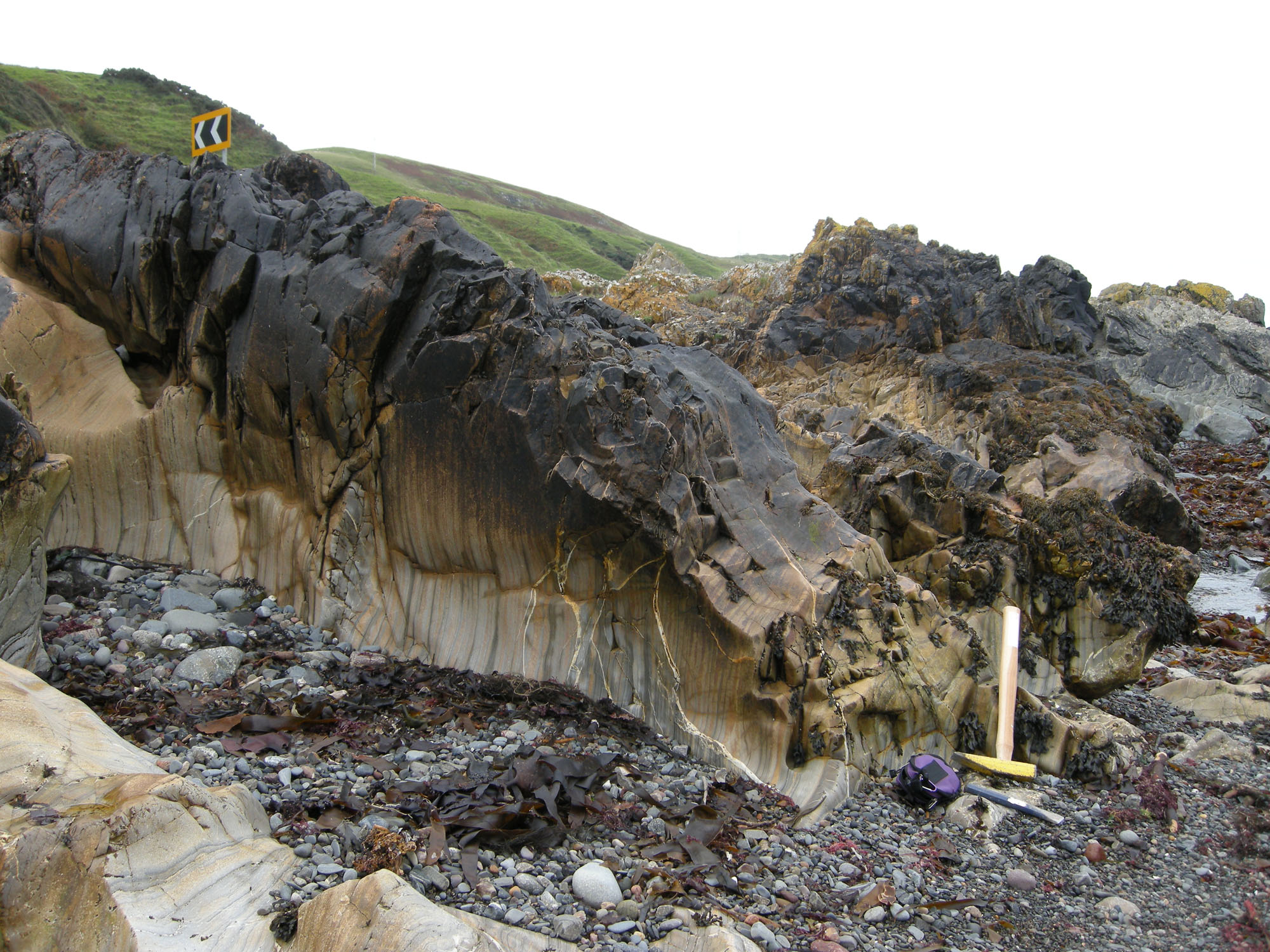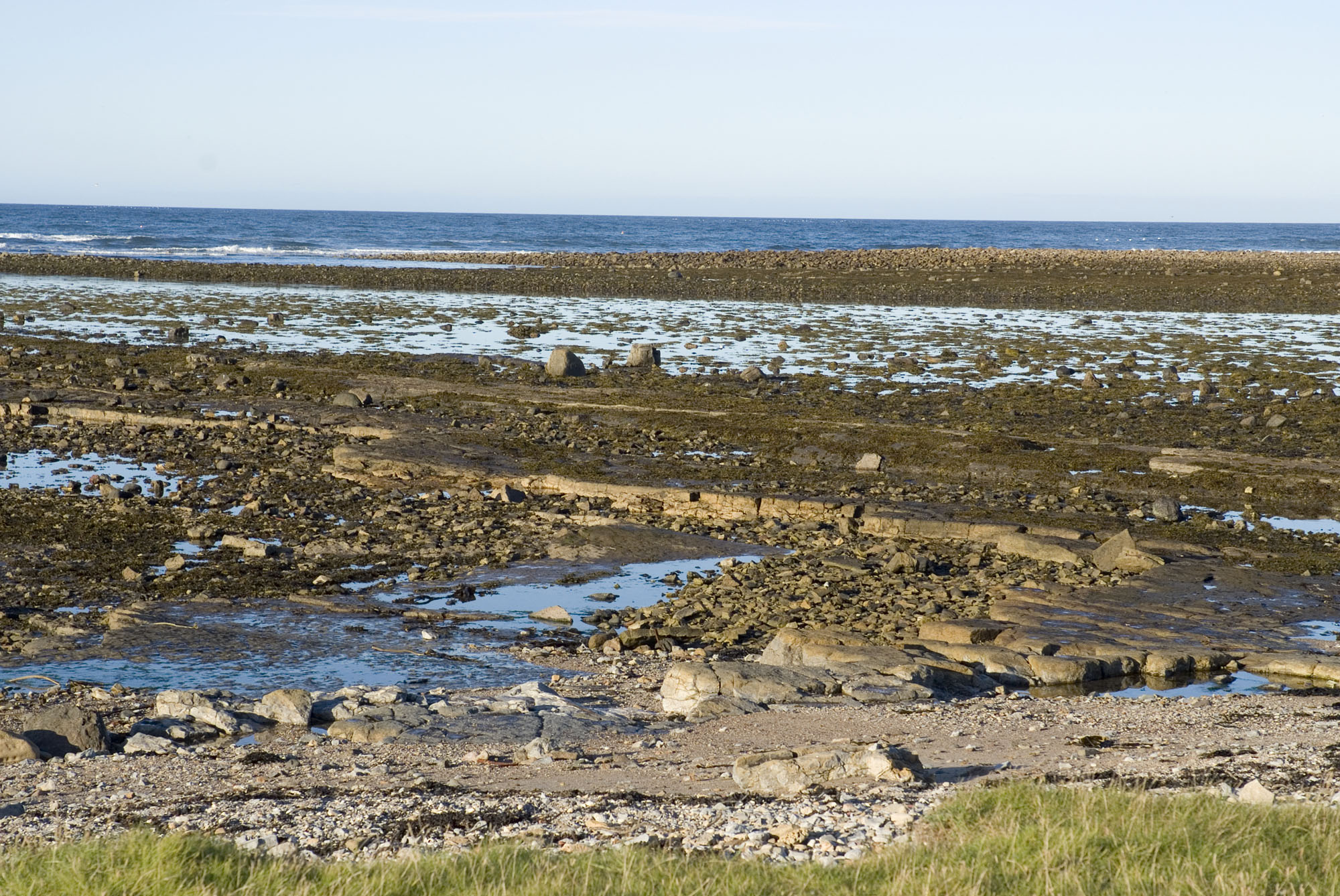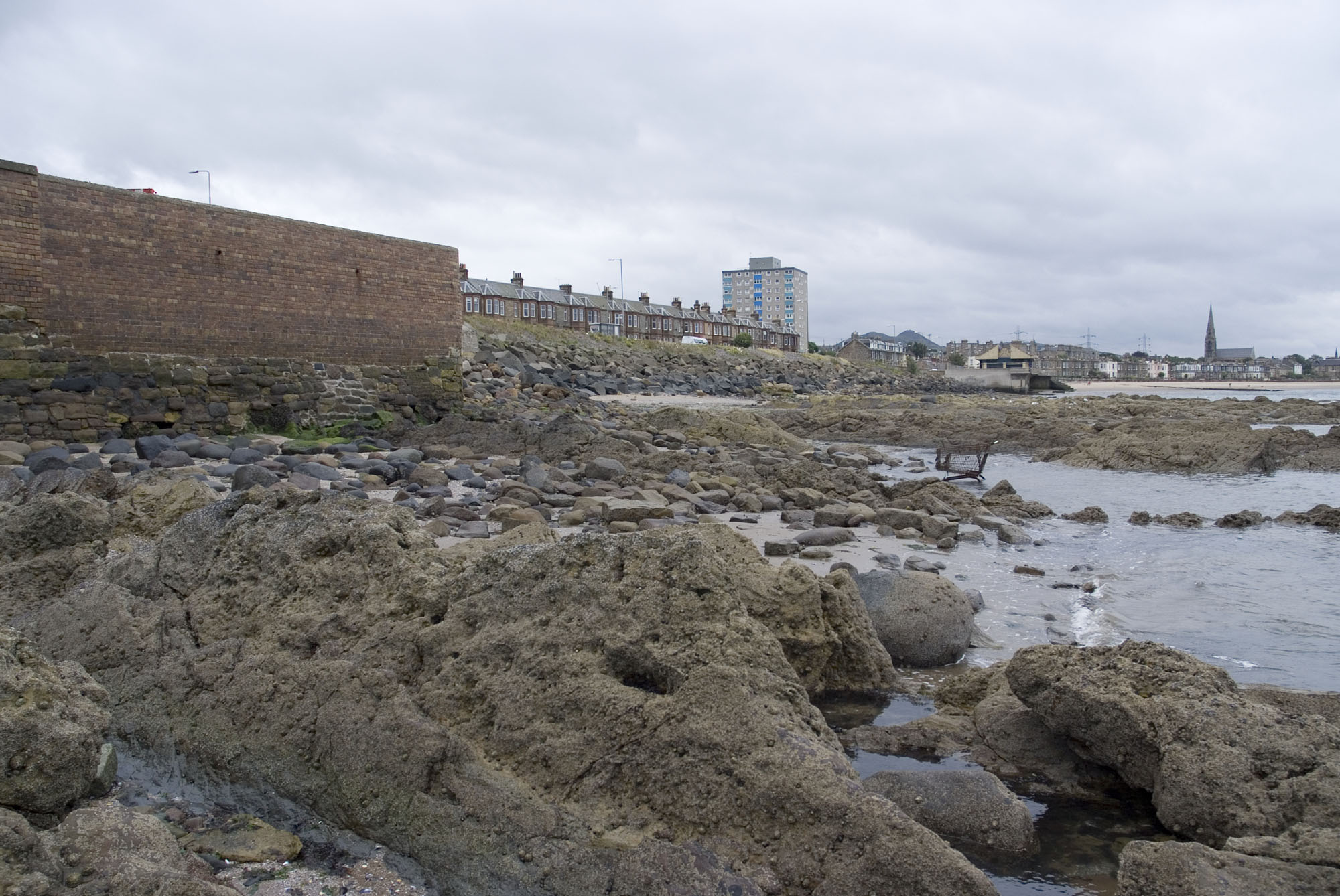To the north of the sandy Gosford Bay beach is an outcrop that is incredibly rich in Carboniferous marine fossils. Corals, bryozoans, crinoids and brachiopods are all very common. They are easy to collect and the location is ideal for children, especially for finding the tumbled coral pebbles. The sandy beach is full of pools of water, making a fun family day out, especially in the summer.
Carboniferous, Foreshore Outcrops, Rating: ♦♦♦♦


























